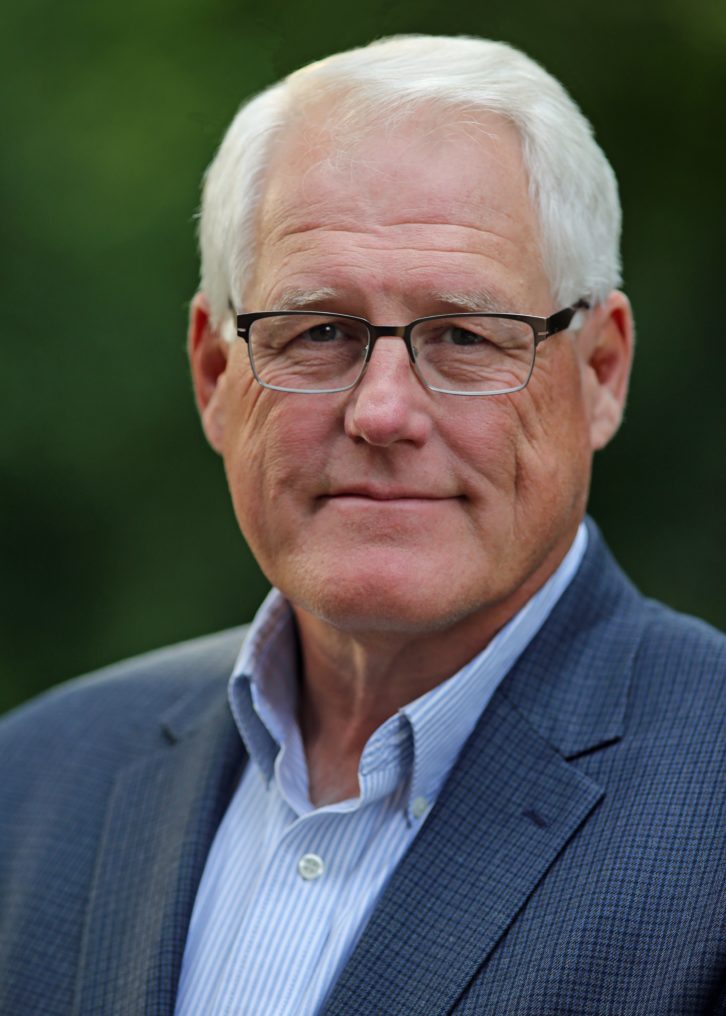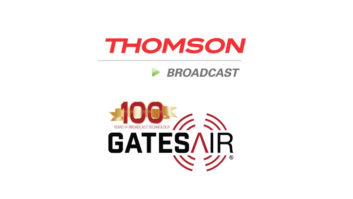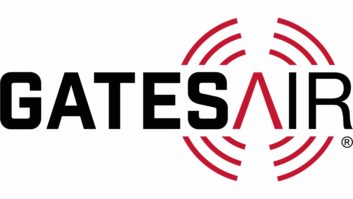RF company Thomson Broadcast made a splash in the U.S. broadcast equipment marketplace this year with its acquisition of GatesAir, thus adding an established American radio and TV brand to its offerings.
GatesAir officials said they expect no changes in operations or staffing levels following the recent sale. John Belza, its chief financial officer, opted to depart, but no other senior management shuffling is expected, they said.
The roots of both companies go back a century, though both have changed hands several times.
GatesAir, which is celebrating its 100-year anniversary, is a manufacturer of radio and TV transmitters as well as STL and networking gear, both IP and RF. It is headquartered in Mason, Ohio, with manufacturing in Quincy, Ill., and has about 200 employees globally.
In 2012 The Gores Group, a private equity company, purchased Harris Broadcast Communications from Harris Corp. for $225 million. It subsequently split Harris Broadcast into Imagine Communications and GatesAir.
Terms of the sale to Thomson, which was finalized in July, have not been made public.
[Related: “Thomson Broadcast Will Acquire GatesAir“]
Thomson Broadcast is based in Paris, France, with additional U.S. operations in West Palm Beach, Fla. Its website notes that it was a founding member of Digital Radio Mondiale. The company was owned by the Arelis Group from 2012 to 2018, then sold to Group Sipromad, which describes itself as “the biggest conglomerate in Madagascar” including businesses in industry, real estate, tourism, aviation and renewable energy.
Thomson Broadcast opened operations in Florida several years ago to enter the U.S. market organically, according to Bruce Swail, CEO of GatesAir, but realized it could grow much more quickly with this acquisition.

“Scale player”
Swail said the acquisition “was not unexpected for us. We had hired an investment banker a year and a half ago to explore this. Typically, private equity firms have a deadline to turn over a company. They raise money to buy a few companies but eventually they have to sell off those funds to liquidate them in order to buy others. So the timing was right for us. We have turned around the company the past five years and built up a good performance record, so we became an attractive asset to go onto the market.”
Principle R&D for GatesAir will remain in Ohio, Swail said, and development engineers are still based in Illinois. GatesAir also has a facility in Brescia, Italy and an Asia Pacific sales office.
Swail said the weeks following completion of the sale were “fast and furious,” with meetings between Thomson and GatesAir leadership.
“We went from a private equity owner to a strategic owner. (Thomson) is in the business and familiar with the marketplace. As an operations manager you always prefer to have a strategic owner rather than a financial owner. They are living and breathing the same things you are. We are super excited. It’s all good stuff.”
[Related: “GatesAir’s 100 Years of History in Pictures“]
Swail said there is very little overlap in businesses between Thomson and GatesAir.
“Their principal interest in the acquisition of GatesAir was to gain a U.S. presence. They have become a scale player in this country virtually overnight. There are no really operational synergies between the two companies. It was more of a strategic play for them. And we’ll collaborate with them on the international front where they have some strengths that are complimentary to us.”
Swail joined GatesAir in 2017, succeeding Phil Argyris, and has spent 40 years in the technology industry, including a long stint with Motorola.
He describes Group Sipromad as “historically a business that tends to go into industries for the long term, which is different from a private equity firm. The new ownership group could open up some investment opportunities for us.”
Thomson Broadcast Chairman Ylias Akbaraly declined to answer Radio World’s questions about the strategy behind the acquisition.
In a press release he described it as “an excellent and significant step for Thomson Broadcast to further reinforce its worldwide leadership in the fast-evolving world of broadcast technology. The combined force of these ideal strategic partners will support each other’s growth and the growth of the industry at large.”
Thomson Broadcast posted a video to YouTube in September documenting Akbaraly’s first visit to GatesAir’s Cincinnati-area headquarters and tour of its Quincy, Ill., production facility:
Cloud ahead
The current broadcast equipment marketplace is mature yet still growing, Swail said, specifically including radio.
“We have had a couple of good years. Several of the major broadcast groups have been through financial restructuring in recent years, but that is in the rearview mirror now so they are aggressively refreshing their plants and modernizing and unifying their networks so they can have standard operating procedures.
“That has resulted in good run rate for us. We have a couple of products that are well suited for what the radio groups are going through.”
[Related: “Thomson Broadcast Completes Acquisition of GatesAir“]
He cited the Intraplex Ascent product, a virtualization of the Intraplex codec line, which he said has been popular with major broadcast groups.
“We essentially took a page out of telecom’s book. They had been moving toward the notion of getting rid of ‘boxes’ for entities and instead having virtualized slices in a server array in a server farm. Then you can scale up or down on capacity for real-time demands and needs,” Swail said.
“I think that theme will continue. We don’t play in all the software solutions at the station level, but you’ll continue to see more development of cloud-based and virtualization implementations. The network resiliency and redundancy you get by going to the cloud with this stuff you just can’t pass it up.”
GatesAir is beginning to see good growth internationally in DAB, Swail said, which he said is gaining deployment momentum. He also mentioned India and its planned growth in FM.
“We certainly have opportunities in India. It’s a focus of ours. We have introduced a new FM product that hits the price and power density footprint that is well suited for that country,” referring to the Flexiva GX, a transmitter line with power levels of up to 10 kW.
“It’s analog FM only, so we have taken off the cost burden for digital, since some markets just never expect to go to digital FM. By taking out the digital circuitry we can be aggressive on the price.”
GatesAir plans to continue its presence in other markets, like public safety and emergency response.
“We have done some military work, some products that went into experimental physics where high-power RF was needed as part of particle accelerator programs for the U.S. government. I would expect that you would hear more from us in industries that you would not consider to be RF in nature.”
The broadcast manufacturing marketplace does continue to cope with semiconductor chip shortages, Swail said, creating a tough climate for tech companies.
“We are going to struggle with this problem for a few more years before it gets better. It just creates a lot of headwind for an industry that is challenging enough already.”










